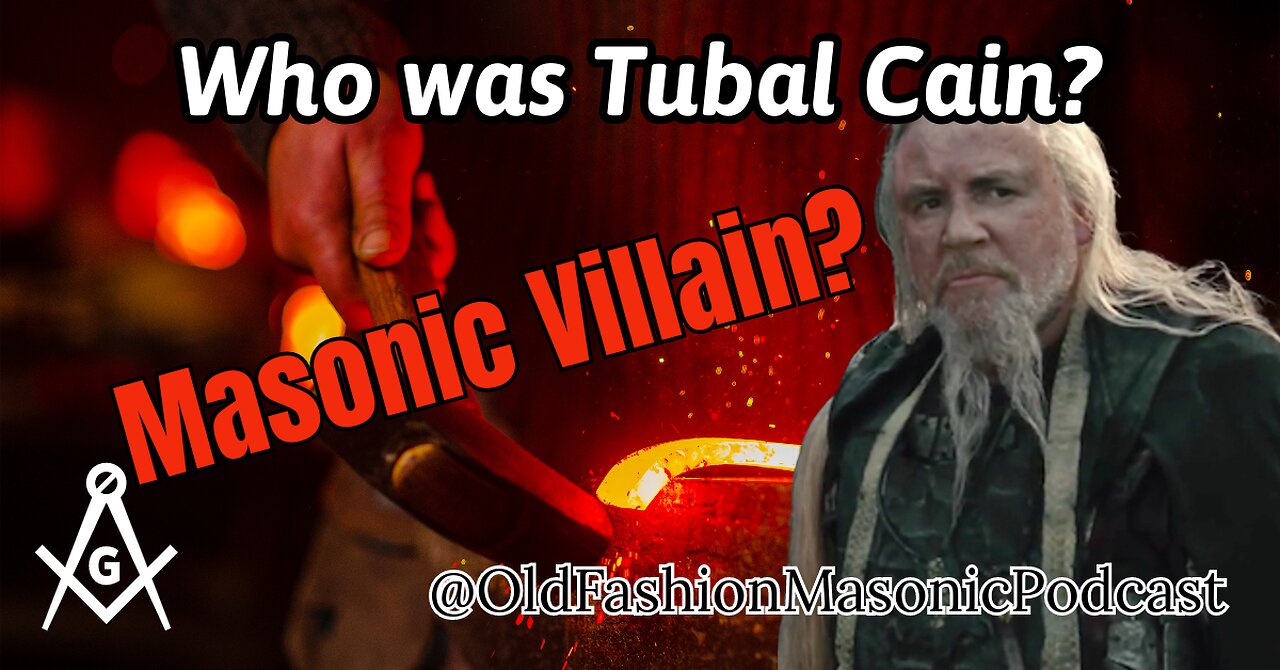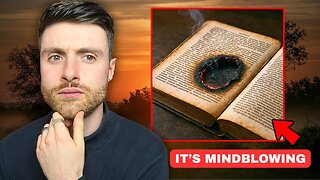Premium Only Content

Freemason Tubal Cain; Masonic Villain or Hero?
Once upon a time, in the rolling hills of the Appalachian Mountains, there lived a man named Tubal Cain. He was a skilled blacksmith, known far and wide for his exceptional craftsmanship and the mysterious symbols he etched into his work. Tubal Cain was a man of few words, but his hands spoke volumes through the artistry of his creations.
Tubal Cain's humble forge nestled deep within the forest had an air of secrecy about it. Rumors circulated through the nearby town that Tubal Cain was a Freemason, a member of a secret society steeped in tradition and ancient wisdom. The Masonic symbol, a square and compass, was said to be etched into the foundation of his forge, hidden away from prying eyes.
One sunny afternoon, a curious traveler named Samuel arrived in town. Samuel had heard the legends of Tubal Cain and his extraordinary blacksmithing skills. Intrigued, he set out to seek the enigmatic craftsman in the hopes of learning from the master himself.
After days of wandering the winding forest trails, Samuel stumbled upon Tubal Cain's hidden forge. He marveled at the exquisite ironwork displayed outside the shop, each piece adorned with intricate designs, some bearing the unmistakable Masonic square and compass.
Samuel cautiously approached the forge and knocked on the heavy wooden door. Tubal Cain emerged, his rugged face etched with age and wisdom. Without a word, he beckoned Samuel inside.
The interior of the forge was a mesmerizing labyrinth of tools, anvils, and the soft glow of embers. Weapons, tools, and decorative pieces lined the shelves, each a testament to Tubal Cain's artistry.
Tubal Cain gestured for Samuel to sit down and handed him a simple iron rod. Samuel watched in awe as Tubal Cain transformed the shapeless metal into a delicate, intricate design. The flames danced in the background, casting an eerie, enchanting light on the surroundings.
As the hours passed, Tubal Cain shared stories of his craft, revealing that he had indeed been a Freemason for many years. He spoke of the society's dedication to self-improvement, moral values, and the pursuit of wisdom. The Masonic symbols he incorporated into his work were not just for show but held profound meaning for those who understood.
Samuel listened intently, absorbing not only the blacksmith's skills but also the wisdom of the Freemasons. He realized that Tubal Cain's artistry was a reflection of his deep commitment to these principles. The blacksmith's creations weren't merely objects; they were conduits of his beliefs and values, carrying a message of enlightenment and personal growth.
Days turned into weeks, and Samuel became Tubal Cain's apprentice. Under the master's guidance, he honed his blacksmithing skills and learned the deeper lessons of life. As he worked alongside Tubal Cain, Samuel came to understand the true meaning behind the Masonic symbols etched into their creations.
In time, Samuel left the hidden forge, carrying with him not only the knowledge of a master blacksmith but also the profound teachings of a Freemason. He spread Tubal Cain's legacy far and wide, not just through the intricate ironwork but also through the timeless principles of self-improvement and enlightenment that he had learned.
Tubal Cain continued to forge his creations in solitude, knowing that his work would endure as a testament to the power of craftsmanship, wisdom, and the mysteries hidden within the symbols of the Freemasons. And so, the legend of Tubal Cain lived on, a beacon of light and knowledge in the heart of the Appalachian Mountains, inspiring all who sought his wisdom and craftsmanship.
-
 5:48
5:48
Old Fashion Masonic Podcast
1 year agoFreemason with 1,000 Voices
218 -
 20:33
20:33
Sideserf Cake Studio
1 day ago $3.19 earnedI Built A Bikini Bottom Fish Tank CAKE!
22K11 -
 LIVE
LIVE
Atarithepaladin
14 hours agoPaladin Playthrough Ep 17
153 watching -
 10:35
10:35
Warren Smith - Secret Scholar Society
1 day agoExposing the Illusion of Gary's Economics
57.9K11 -
 13:14
13:14
Michael Button
1 day ago $4.15 earnedThere’s a Giant Hole in Human History
26.7K23 -
 9:23
9:23
Russell Brand
23 hours agoThe TRUTH Behind Stephen Colbert's Downfall
66.6K102 -
 17:47
17:47
T-SPLY
1 day agoDems Fume: L.A Protesters Clash With Federal Agents And National Guard...Again!
18K20 -
 LIVE
LIVE
Lofi Girl
2 years agolofi hip hop radio 📚 - beats to relax/study to
296 watching -
 22:50
22:50
marcushouse
1 day ago $1.35 earnedStarship Tech Update Reveal, and Fire Time Already!? 🔥
14.7K5 -
 53:17
53:17
The Car Guy Online
23 hours ago $1.81 earnedNextGen Engineer Reveals How GM Is Quietly Fixing 10-Speed Problems.
14K3